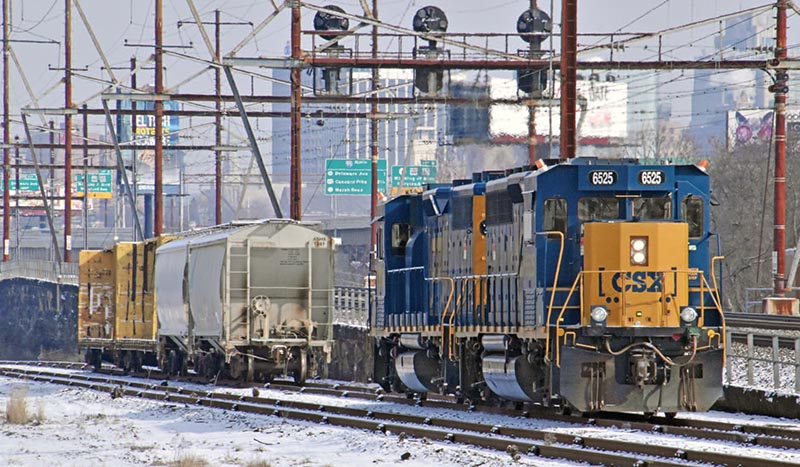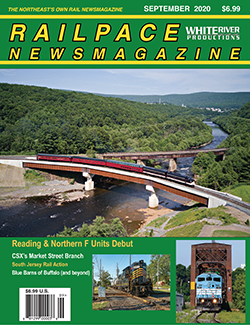 by Michael S. Murray OSFS/photos as noted
by Michael S. Murray OSFS/photos as noted
CSX Transportation is a Class I freight railroad operating in the eastern United States and the Canadian provinces of Ontario and Quebec. While the railroad operates approximately 21,000 route miles of track in North America, this story focuses on a mere two miles of track that CSX used until the fall of 2019 to interchange traffic with its east coast rival, Norfolk Southern, in Wilmington, Delaware.
A Rich History
The story of what would eventually become the Market Street Branch of the Baltimore & Ohio Railroad began in the wake of the American Civil War. With the cessation of hostilities, Wilmington was served by one railroad: the Philadelphia, Wilmington & Baltimore (PW&B). But within the next decade, two more roads would seek to link Wilmington’s booming industrial waterfront with the outside world.
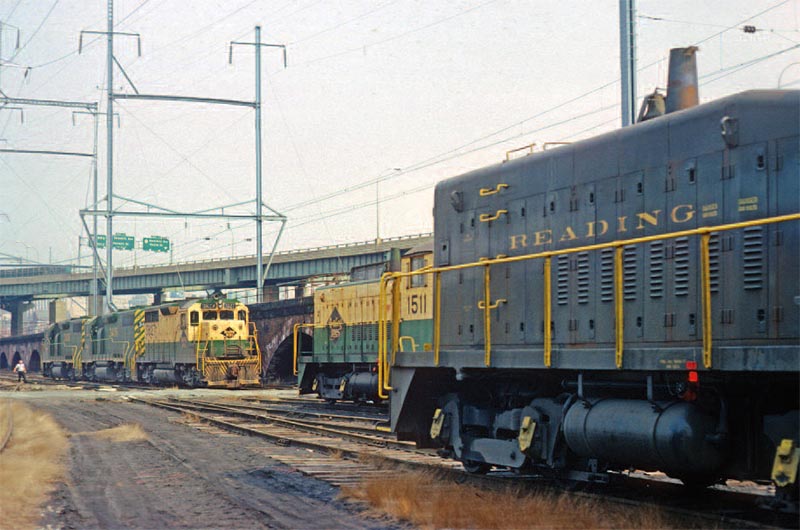
Richard Jahn found a mix of both yard and road power when he visited the Reading Beech Street facilities on March 1, 1976. That’s the Beech Street grade crossing separating locomotives 3627 and 1511. Richard W. Jahn photo
The first of the two new railroads to challenge the PW&B’s hegemony would be the Wilmington & Brandywine Railroad Company. Chartered by a special act of the Delaware legislature in 1861, its name was changed in 1865 to the Delaware & Pennsylvania State Line Railroad Company. This road was subsequently consolidated with the Berks & Chester Railroad in 1866 to form the Wilmington & Reading Railroad Company. Completed in 1874, it meandered some 72 miles from Wilmington north to Reading, Pennsylvania. It entered receivership in 1875 and was reorganized as the Wilmington & Northern Railroad Co. in 1877. The Reading Company gained control of the W&N in 1898 through an agreement with Col. Henry DuPont (of the famous DuPont family) and was leased for 999 years to the Philadelphia & Reading (P&R) at the turn of the century.
What would eventually become the B&O’s Market Street Branch began life as the Wilmington & Western. Constructed between 1871 and 1872, the railroad had planned to build as far west as Oxford in Chester County, Pennsylvania, part of an ambitious plan to connect Wilmington with Pittsburgh. In actuality, a far more modest line terminated at Landenberg, Pa., where it interchanged with the Pomeroy and Newark (which would later become part of the PRR system). The W&W entered receivership in 1875; it was sold and reorganized as the Delaware Western in 1875. But this modest line was destined for bigger things, as a battle for control for the PW&B loomed on the horizon.
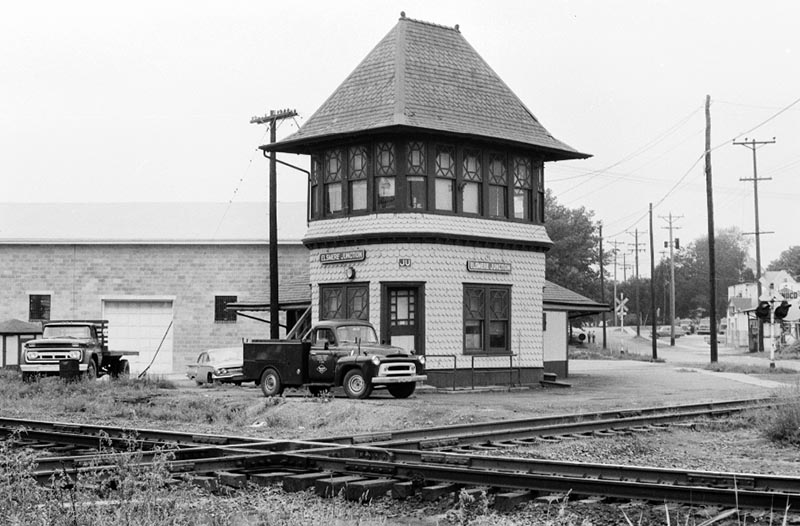
The late Dave Augsburger visited the area in June 1963 and snapped this photograph of one of the area’s most prized railroad gems: The Reading Company’s “JU” interlocking tower that controlled movements across the diamond at Elsmere Junction of the Reading Company and Baltimore & Ohio, just east of B&O’s Wilsmere Yard. The tower was decommissioned and subsequently razed several years after this photo was taken. David Augsburger photo
The PW&B had been the first railroad to enter Wilmington in 1837, one of several segments constructed between Philadelphia and Baltimore. In the decades that followed, the PW&B provided a friendly conduit for the B&O’s traffic east to Philadelphia, and by the late 1860s, a through-route had been established between Baltimore and northern New Jersey’s tidewater across from New York City via a series of connecting roads in Philadelphia. As Herbert J. Harwood observed in his book Royal Blue Line, “The B&O had the best of all worlds. It had an outlet to Philadelphia and New York and at least some control over the services and rates, but with no heavy financial commitments. B&O president John Garrett could devote most of his attention and the B&O’s somewhat limited financial resources to the railroad’s real mission, building Baltimore’s western and southern trade. Or so he thought.”
Fast forward to 1881, when the PRR gained total control of the PW&B by acquiring some 92% of the latter’s stock. Having outmaneuvered the B&O for control, the PRR informed Garrett’s road that it would cease allowing it to use the PW&B’s direct route to Philadelphia at a date certain, first affecting passenger trains and then, freight. Although the B&O had established an alternative route in the 1870s for its Philadelphia/New York traffic via agreements with the Reading Company and Jersey Central, the B&O would now need to construct its own route from Baltimore to Philadelphia. Garrett wasted no time.
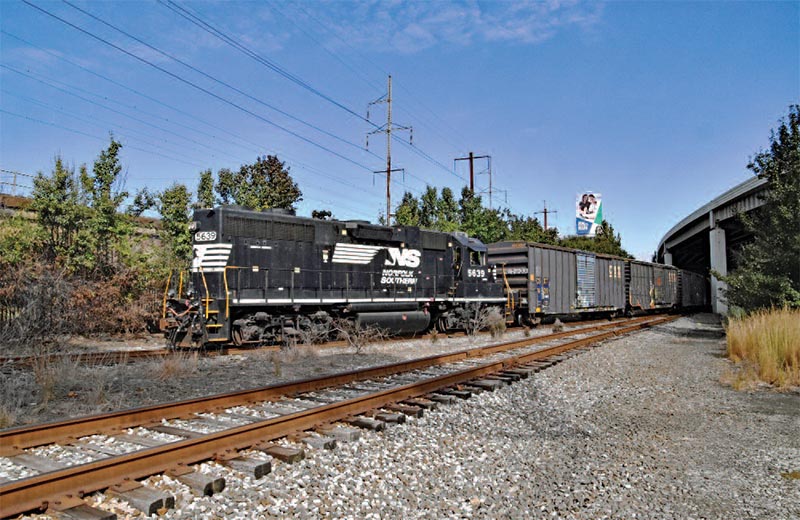
Norfolk Southern local Train K56 emerges from the shadows under the Interstate I-95 viaduct and diverges onto the connection track that will take it under Amtrak’s Northeast Corridor to reach the NS/CSX interchange, October 22, 2018. Michael S. Murray OSFS photo
Enter the diminutive Delaware Western
Garrett purchased the Delaware Western and reorganized it as the Baltimore & Philadelphia. Insofar as the B&O’s original Maryland charter would only authorize construction of the Baltimore-based road east to Newark, Delaware, the B&P needed to bridge the gap from the Maryland-Delaware state line to the west side of the Schuylkill River in Philadelphia. It avoided the PRR-controlled Junction Railroad in Philadelphia via the Schuylkill River East Side, whereby it re-established a friendly connection with the Reading Company. The former Delaware Western line to Landenberg became the B&O’s Landenberg Branch (which today is owned and operated by tourist line Wilmington & Western), while the segment connecting the new mainline to Wilmington’s industrial heartland became known as the Market Street Subdivision, Extension, or Branch.
By the end of the 19th century, both B&O and Reading Company were vying with Pennsy for their respective shares of robust freight traffic along the Christina River riverfront and the south side of Wilmington in the vicinity of the Delaware River waterfront. Wilmington’s largest industries had been established firmly in the fertile crescent between the former PW&B and the Christina River. What began as the small foundry of Bonney & Bush in 1830 became the Lobdell Car Wheel Company (1867)– in its day the world’s largest producer of railroad car wheels; Harlan & Hollingsworth (1837) was a railcar manufacturer and shipbuilder; Pusey & Jones (1848) produced ships and industrial equipment; Jackson & Sharp (1863) produced railroad equipment, trolley cars and ships.
The Market Street Branch provided a vital link to downtown Wilmington from the B&O’s mainline that bypassed the first city of the First State.
The Viaduct
The most prominent feature of the environs around West Yard (where CSX and Norfolk Southern swap cars) even to this day is the former-PRR brick arch viaduct. Constructed over a six-year period between 1902 and 1908, the four-mile-long structure between LANDLITH interlocking to the north and YARD interlocking to the south includes swathes of landfill supported by stone retaining walls, supplemented with plate girder bridges…


